The world of telecommunications has evolved at a rapid pace, especially within the last decade. With the recent introduction of 5G networks, telecom retailers have redesigned their stores to become experience centers with various IoT products, rather than only selling mobile phones. Brands like Verizon have been at the forefront of change, using evolving technologies to focus products on the network and connected experiences. With a multitude of telecom companies competing for customer attention, their retail experience needs to change to connect with consumers and stand out.
This blog will explore telecom retailers from around the world from a design perspective. Each country has unique yet similar challenges. North American retailers can explore how brands have overcome these challenges to deliver outstanding service.
Asia: The 5G Unmanned Store
In one of the most interesting examples, Singtel, the Singapore-based telecom company, introduced an unmanned retail experience that challenged the status quo of what a retail location should look like for a telecommunications brand. The unmanned store is only 45 square meters and is fully modular and mobile, allowing it to be relocated. Typically, the retailer changes the hub’s location every few months to easily serve high-traffic areas.
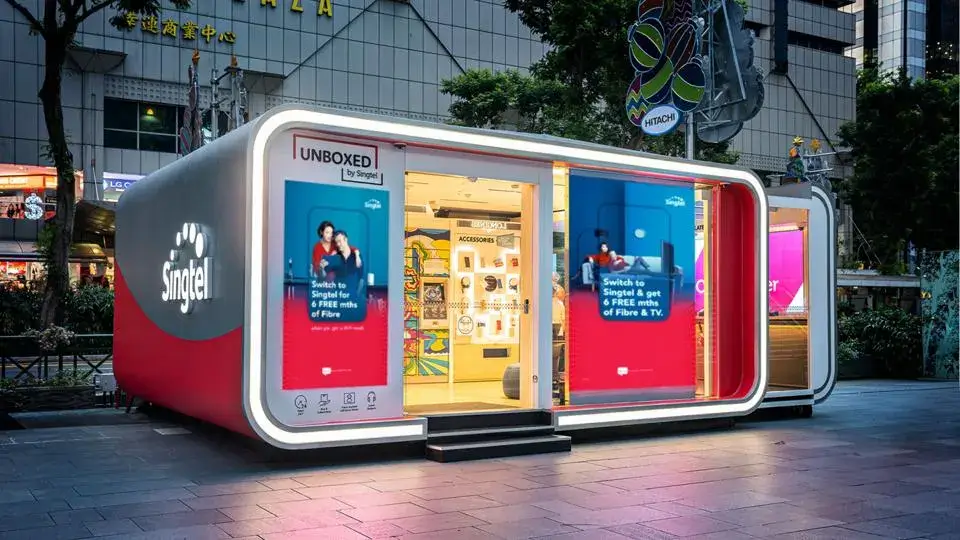
Image Source: Tiffany Lung on Forbes
The retail design enables 24/7 access to mobile devices and accessories, including bill payment, prepaid cards, SIM replacement, and online order pickup. In addition, when a customer purchases a handset in the store, a video-assisted kiosk guides them through the steps to set up their account. This glimpse into the future of telecom retailing offers a low-cost, highly mobile option for brands to provide convenient services to a large number of customers without sacrificing the quality of their experience.
North America: Cox Communications Retail Experience
Cox Communications is one of the largest telecom retailers in the United States, with more than 124 locations across the country. One of the reasons for their success is the transformation of their retail stores into educational and experiential centers. Putting the customer at the center of the experience was essential to the success of the new design with the use of digital technology.
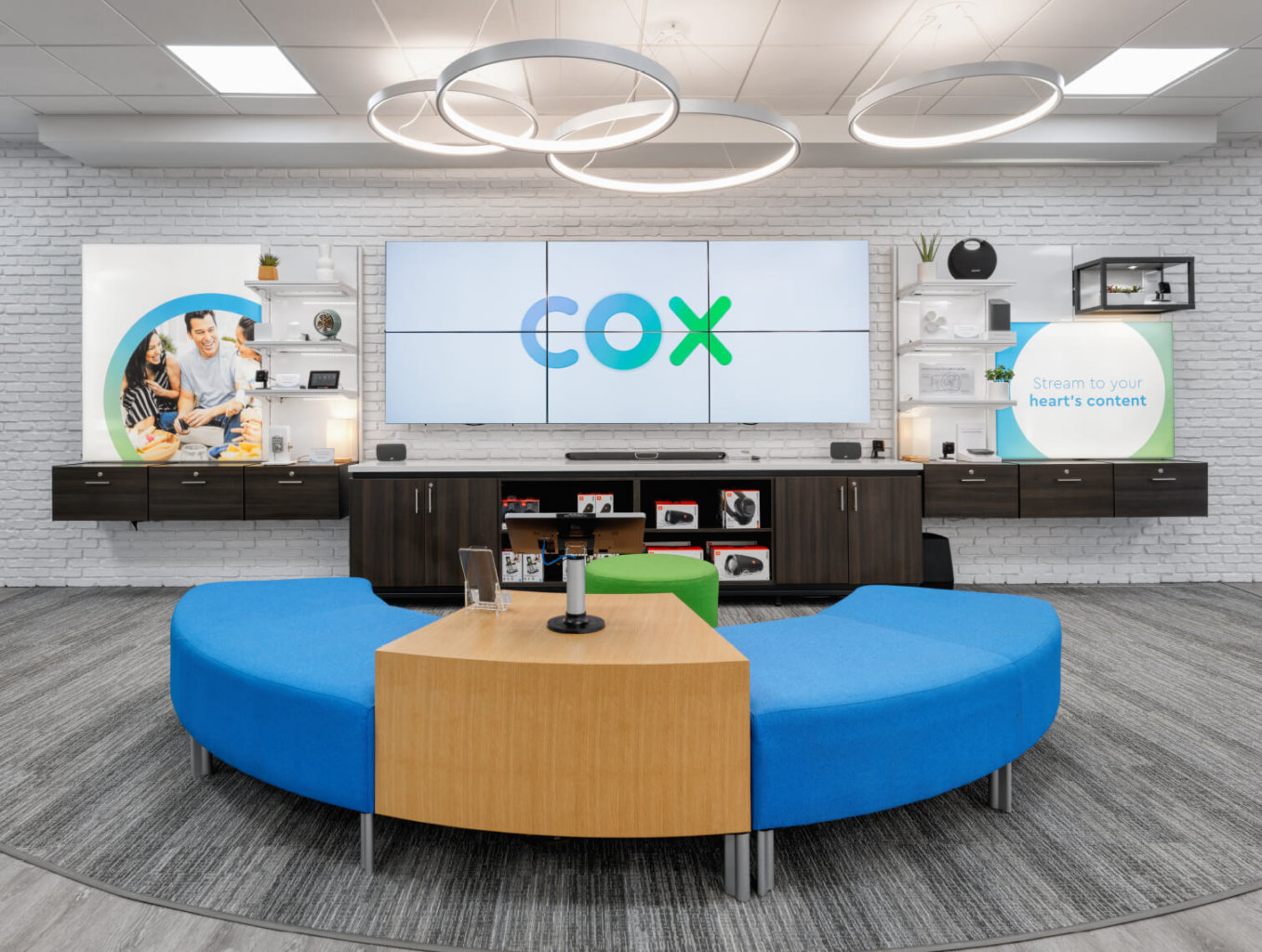
Image Source: SLD
The new store is segmented into experience zones where customers can sit down and explore different products. The store focuses on a connected experience and a more relaxed “living room” design with cozy furniture and merchandising that mirrors the home. These “living” areas reflect the comfort of everyday living and the freedom to explore the devices in a relatable context.
The store also features a digital queuing system that makes it easy to create a friendly, interactive experience. The new and improved Cox Communications retail stores seamlessly blend technology with experiential zones to create tailored experiences for every customer, regardless of their need.
Middle East: Etisalat
As the leading telecom company in the United Arab Emirates, Etisalat makes a lasting impact with a store design that utilizes a combination of digital and traditional retail experiences to fully immerse customers in a range of devices. One of the most impressive features is the wide, welcoming store entrance, giving customers a full view of the experience before they even set foot in the store — an important aspect of inclusivity in retail spaces. A beautifully designed interior with branded colors and graphics encapsulates the different experiences under the brand manifesto of “life: connected.”
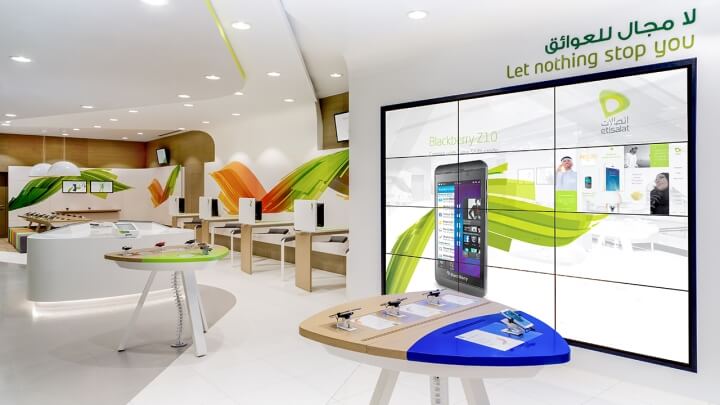
Image Source: Retail Design Blog
The store design is centered around a central desk that instantly diagnoses a customer’s needs and directs them to an area that can help meet those needs. This concept of customer direction reduces friction in the customer journey and improves the overall experience. The design exemplifies how the creation of sectioned spaces allows customers to freely engage with products, allowing a more natural flow to their journey and creating a seamless experience.
Europe: Síminn Flagship Store
In Europe, Síminn has created a flagship store that not only offers experiential retail but also taps into the country’s Nordic roots. With striking features such as deep blues and pine finishes, the space pays homage to the country’s heritage. Even the furnishings, from the couches to the pillows, were sourced from Scandinavian suppliers.
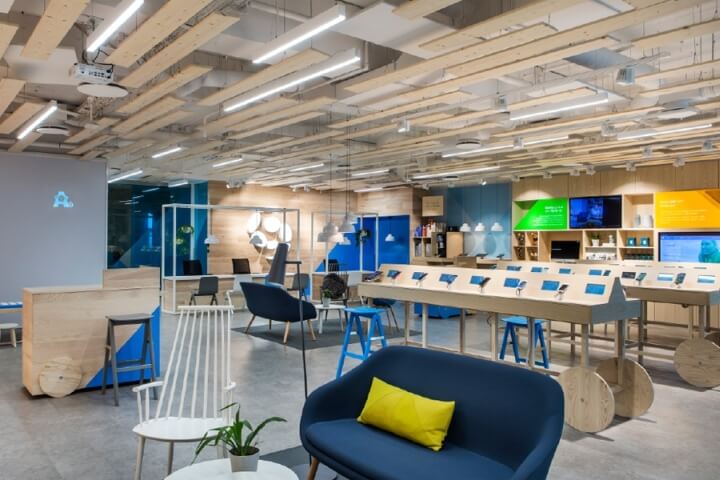
Image Source: Retail Design Blog
The store is designed for experience, comfort, and complete flexibility. Fixtures are fully mobile, allowing the store to adapt to the challenges of the day or host events as needed. In addition, the store embodies the customer experience in environments they are familiar with, from relaxing on a sofa with a tablet to experiencing new devices at a coffee bar. Síminn has thought of everything to improve both the customer experience and the employee experience.
Caribbean: Flow
In the Caribbean, Flow set the standard for regionalized stores that engage consumers on an individual level. The store was designed with an integrated digital solution as the primary customer touch point. This includes digital queuing and a new tablet sales tool for more efficient and streamlined sales opportunities.
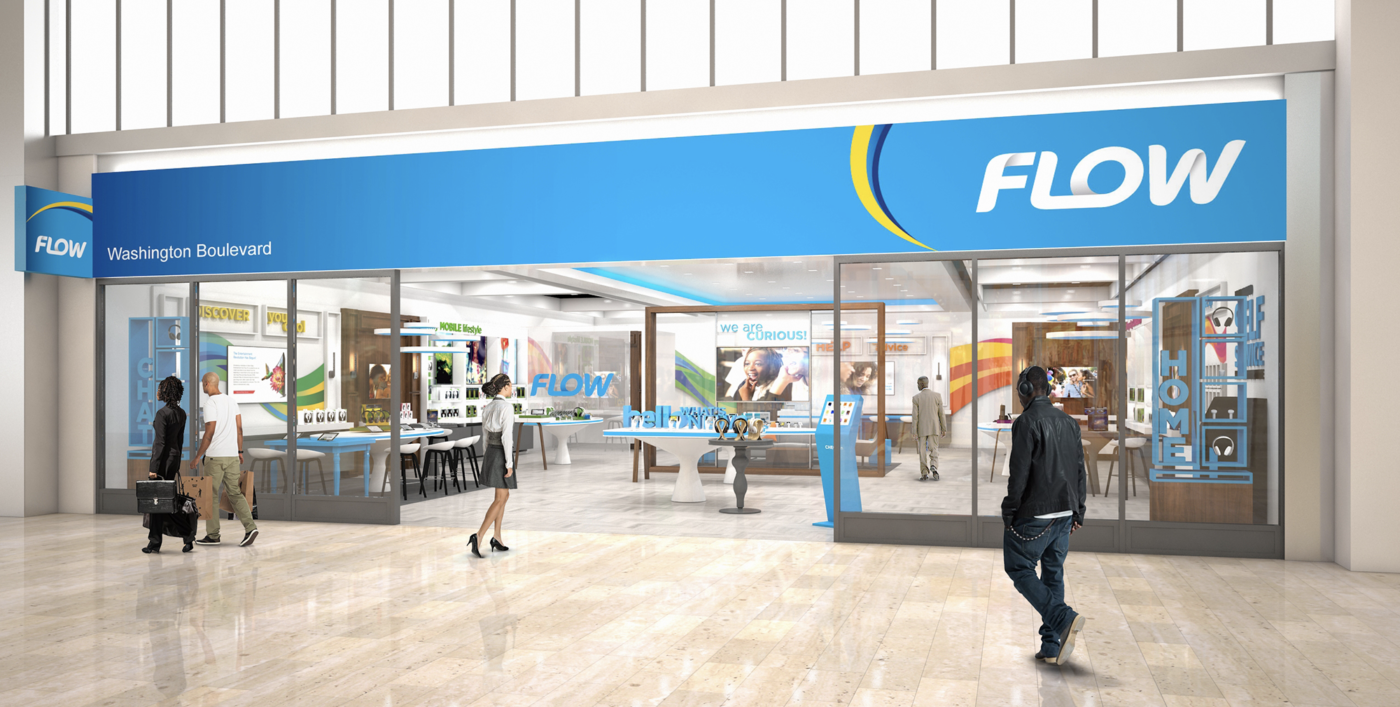
Image Source: SLD
What makes Flow unique is its ability to display localized content for each store. With stores in 13 countries, Flow needs to have a strong brand presence while creating unique content that resonates with the specific region. The new system and store design had an immediate and lasting impact, improving in-store message retention, reducing customer wait times, and creating an engaging environment for customers to explore products at their own pace.
Conclusion
The idea of a retail experience that drives customer engagement is a common theme in telecom retail projects around the world. From North America to Asia, leading telecom companies have focused on ways for customers to try products in ways that feel natural, comfortable, and inspiring. From the fully remote experience of Singtel in Asia to the curated experiences of North America and the cultural roots of Europe, telecom stores are moving toward creating connected experiences that sell. As we move into the future of telecom, 5G networks and new technologies will only enhance the experience, but the physical location remains essential for good customers to try and experience new products before they buy.

